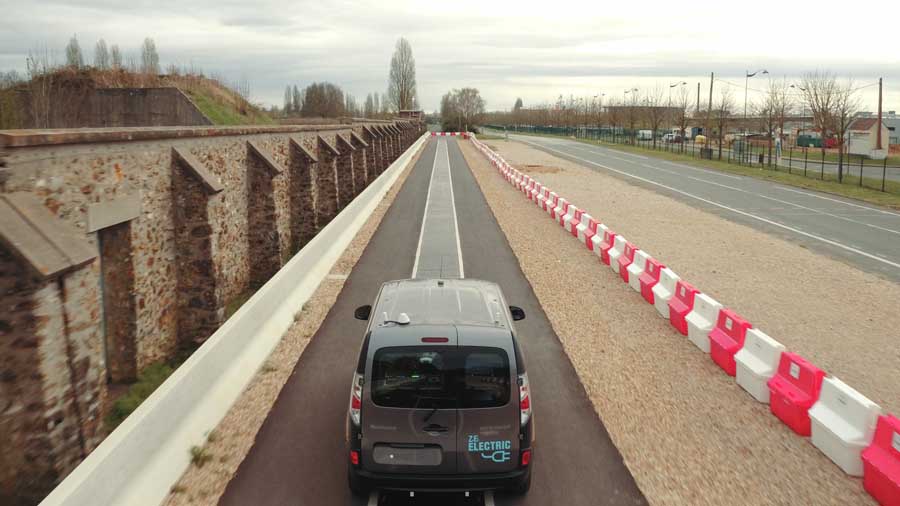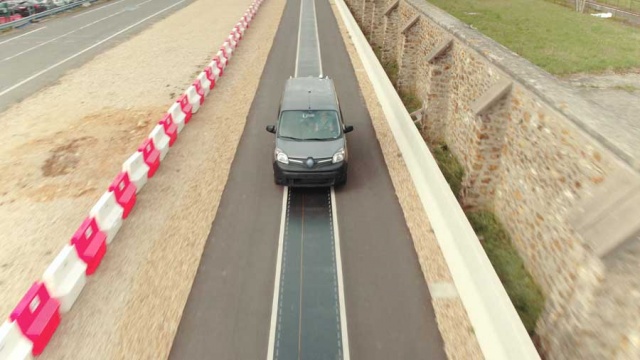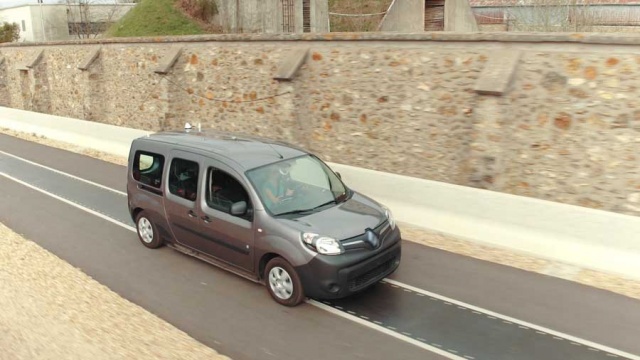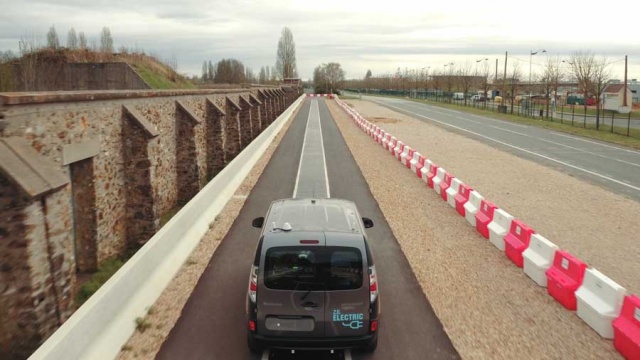What's the news?
Renault has partnered up with Qualcomm Technologies and Vedecom to come up with a new form of inductive charging for electric vehicles, which is called wireless Dynamic Electric Vehicle Charging (DEVC).
DEVC, as its name suggests, works while the car is on the move. It can charge an electric vehicle (EV) at up to 20kW while the EV in question is doing anything up to and around 100km/h. It requires a special 'track', of course, featuring a large inductive charging 'rail' running up the middle of the road, but a pair of Kangoo Zero Emission (ZE) vehicles proved in a demonstration that they would pick up charge in both directions along the 100-metre-long track.
Further tests will now be carried out by Vedecom, to evaluate the operation and efficiency of the energy transfer from the track to the vehicles, to see if it can be practically put into use in the future. In essence, what Renault is claiming is that, if the DEVC infrastructure was taken up in a widespread fashion, then EVs would never have to be plugged in to recharge again.
Anything else?
"Contributing to this exciting project has enabled us to test and further research dynamic charging on our Kangoo ZE vehicles," said Eric Feunteun, EV programme director for Groupe Renault. "Our research engineers have worked very closely with the Qualcomm Technologies and Vedecom teams to complete the DEVC system integration demonstration. We see dynamic charging as a great vision to further enhance the ease of use of EVs, and the accessibility of EVs for all."
Steve Pazol, vice president and general manager for wireless charging at Qualcomm, added: "We are inventors. We are wireless electric vehicle charging. This dynamic charging demonstration is the embodiment of this. I am immensely proud of what we have achieved. The combination of a global team of expert engineers and Qualcomm Halo technology, which covers all aspects of WEVC systems, irrespective of the magnetics used, has enabled us to really push the boundaries of the possible and outline our vision for future urban mobility."




